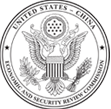Research
The Chinese government is seeking to revamp its state sector through a series of billion dollar “megamergers” involving central state-owned enterprises (SOEs). These megamergers consolidate state control in strategic sectors of economy and eliminate intra-state competition in China. However, they also contribute to increased debt levels among Chinese SOEs and undermine the competitiveness of U.S. businesses and other global firms. This report assesses the objectives of China’s megamergers strategy and evaluates the implications of SOE megamergers (and, more broadly, Chinese government control over the economy) for the global competitive landscape.
Research
China’s digital game market has emerged as the largest in the world but remains heavily restricted to U.S. game companies. U.S. companies are required to license their games to Chinese operators who appear to claim a majority of the revenue a U.S. game earns in China. Intellectual property rights conditions in China create significant challenges for U.S. firms, facilitating piracy in other international markets through China’s manufacture of piracy-enabling devices and restricting the commercial viability of certain gaming genres and platforms within China due to widespread piracy. Chinese companies have acquired several foreign game companies, raising data privacy concerns given the power of the Chinese government to request information from domestic companies and the broad array of data that can be collected by mobile games.
Research
The report examines five categories of China’s advanced weapons systems (counter-space, unmanned systems, maneuverable reentry vehicles, directed energy and electromagnetic railguns) and artificial intelligence applications for national defense. The report also assesses the implications of China’s advanced weapons programs for the United States and its allies and provides recommendations.
Hearings
This hearing will investigate China’s food policies and how they affect the United States. It will examine China’s food security and agricultural trade policy, China’s investment in food resources abroad, the impact of China’s biotechnology policies on U.S. firms and farmers, and export opportunities for U.S. food and agricultural firms in China. It will also probe food safety challenges in China and how the United States should respond to food safety and market conditions in China.
Research
The U.S.-China Economic and Security Review Commission released a report entitled Supply Chain Vulnerabilities from China in U.S. Federal Information and Communications Technology, prepared for the Commission by Interos Solutions, Inc. The report examines vulnerabilities in the U.S. government information and communications technology (ICT) supply chains posed by China, and makes recommendations for supply chain risk management.
Press Release
Hearings
This roundtable will examine Chinese views on the likelihood of various potential North Korean contingencies, how China could play a role in the lead-up to or unfolding of such contingencies, and implications for the United States and the region. This roundtable will explore the following: (1) Chinese thinking about potential crises and contingencies involving North Korea; (2) what the People’s Liberation Army (PLA) and other stakeholders are doing to prepare for these various scenarios; (3) Chinese diplomatic activities in this area; and (4) geopolitical and security implications for the United States.
